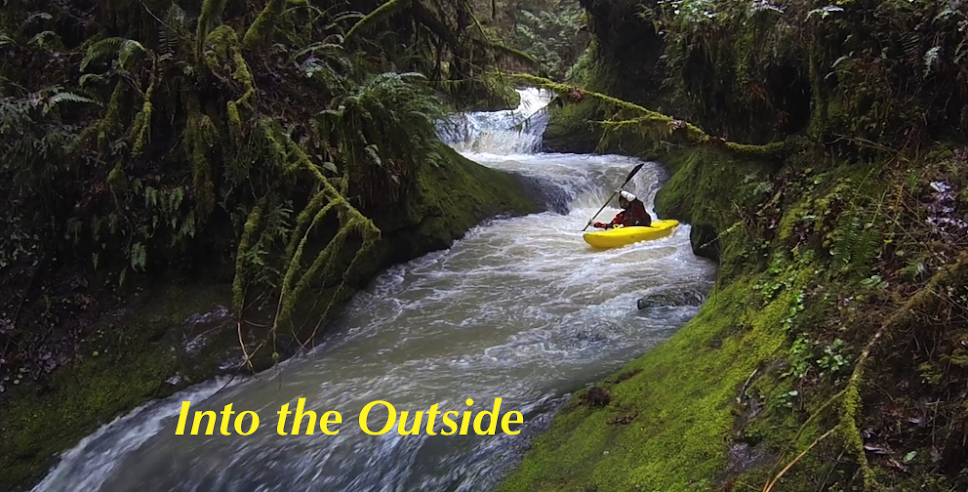Runnable levels are about 100 cfs or more coming out of Barney Reservoir, which generally only happens when the reservoir is full (1640.9'). At 100 cfs the bedrock drops are runnable and fun, but the in between is rocky. 200 cfs is a fun flow, and feels more medium in the boogie. Be cautious about going in at higher levels if you aren't familiar with the current wood situation.
Don't expect to get on this run early in the season as it takes awhile for the reservoir to fill up each winter.
The run has many fun class IV rapids, both bedrock and boulder features. Moving around on the bank is relatively easy compared to other obscure Oregon streams.
110 cfs
Photo: Pete Giordano
There were two rapids in the mile above the confluence with Elkhorn Creek that had old growth logs requiring extra attention (still runnable and fun-ish). The run also had a number of alders sprinkled throughout the run, but none that required portaging in Feb 2016. Be diligent about checking for wood your first time down. If it hasn't been run in a a couple years, there is probably going to be downed alders in the creek bed, boater-friendly beavers are responsible for keeping this run in good form.
Coming from the Willamette Valley, I have used Turner Road out of Yamhill (Blocked to the public by Weyerhaeuser in Spring 2017, then re-opened in Fall 2017). Check with them for current accessibility, you can inquire on their recreational Facebook page.
Rules posted at the gate.
Access is also available from the coast, along the NF Trask River Rd. This route is always available. It is recommended that someone in your group do some rudimentary map-work before heading up there. Coming from the coast you can drive up along the Trask itself.
Click to enlarge.
The take out (45.4656, -123.4612) for the MFNF is the same as the put in for this run.
Put in spur (45.4667, -123.4199): Drive to its end, then walk back the way you came a short ways down the road to find the access trail. Or just schwack downhill to the creek. This spur is at the 6 mile marker for the mainline logging road, a "6" has historically been painted on the tree adjacent to this spur.
Marker for the start of access trail.
It's not a good path, but orange flagging was there to help with finding the easiest way down.
Put in at the confluence of Coffee Creek and the MFNF Trask: 45.4629, -123.421
Thanks Pete, Nick, Joe, Jesse, Mark and Priscilla for helping suss out the particulars of this run.
-----------------------------------------------------------------------------------------------------------
Story: Like trail building, but the trail is a creek.
-----------------------------------------------------------------------------------------------------------
Nick Hymel, Pete Giordano and I had run nearby Elkhorn Creek and found ourselves with time left over. Pete and I decided to paddle the MFNF Trask that afternoon since it shared the same take out and we had seen water entering Elkhorn as we passed by. I had run it once by myself a couple years before, but only remembered a few rapids and the water had been very low. I had considered it a one time trip.
This time with a decent flow, I was surprised how enjoyable the run was. Lots of nice ledges and class IV bedrock rapids dotted the run. However, there were quite a lot of alders in the stream blocking lines and forcing portages. The reservoir keeps this creek from flooding, so it doesn't get flushed out naturally like other streams of a similar size might. Most of these trees were not in rapids, so we had a good time even with the 10 or so portages.
A good enough time in fact that a group of boater-friendly beavers returned that year, and by the end of a long day the amount of portages had been reduced to zero. I came back a couple more times that year, and even did a double day with Connor Dixon, not getting out of our boats on the second lap. The next season I tried to return, but found a locked gate and the run fell off my radar. Word is the gate is back open in 2021, but the wood has returned and no one has found the time to clear it out for boating yet.
-jacob
















